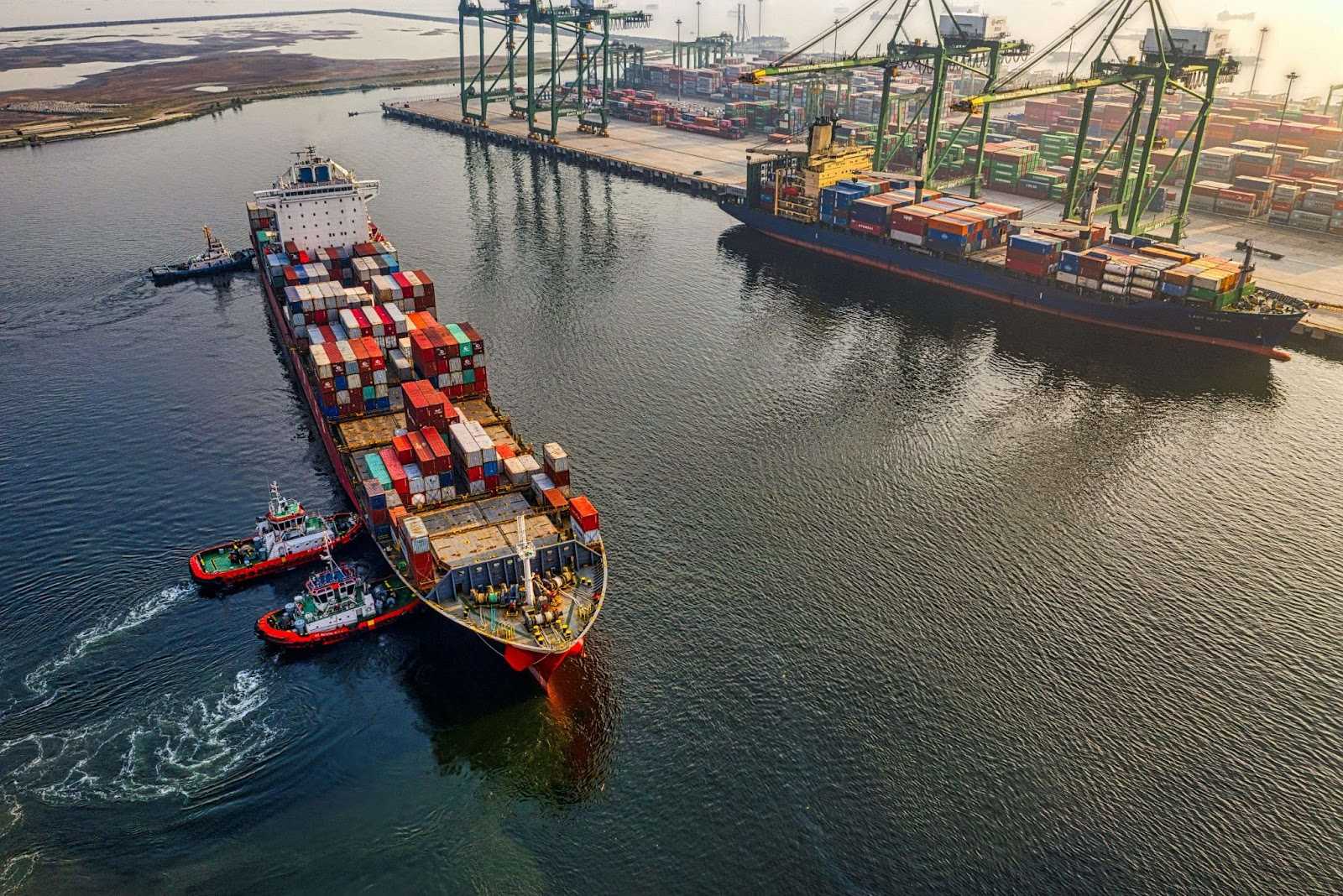
BUSINESS CONSULTING
27 May 2025
What Is a Global Supply Chain?
The international marketplace is thriving, with large companies and small businesses alike able to connect to customers across the planet. This makes the question “What is a global supply chain?” more relevant than ever before. Simply put, it’s the network of connected suppliers, manufacturers, logistics providers, and distributors that make international trade possible. It gets goods and services from their point of origin and into the hands of consumers.
Understanding how the chain operates is essential for effectively engaging with cross-border commerce — particularly if you have ambitions for multinational reach. So, we’ve put together this guide with international business operators in mind, rather than exploring localized models.
How a Global Supply Chain Works
The shape of a global supply chain will often depend on the industry, but the components usually include:
- Raw material source – Suppliers from different regions provide production materials.
- Manufacturing – Manufacturing facilities will transform and assemble materials into finished products.
- Shipping – Transportation and logistics partners arrange shipping by air, sea, or land to other parts of the world.
- Warehousing and distribution – Products are stored upon arrival in the destination country before being distributed to regional market hubs.
- Final delivery – The last stage of the international supply chain strategy is sending the product to retailers or directly to the consumers themselves.
Products can pass through several countries throughout the collaboration. For example, raw materials from South America might be manufactured in Southeast Asia before being sold in Europe. This complexity makes well-coordinated collaborative operations across time zones, regulatory environments, and transport systems essential to success.
Benefits of a Global Supply Chain
Operating a global supply chain offers a range of advantages. Outsourcing to regions with lower labor or material expenses makes manufacturing more cost-effective. International connections also allow for a diversified supplier base, increasing resilience against localized disruptions alongside enabling access to a broader range of materials and expertise. It’s also worth considering that these supply models scale effectively across multiple markets, supporting growth.
These combined benefits, when led by experienced international supply chain partners and guided by an experienced business consulting service, can ensure sustainable business continuity and give you a competitive edge in worldwide markets.
Challenges of Managing a Global Supply Chain
Global supply chains are quite complex and nuanced. As a result, alongside the benefits there can also be some challenges, including:
- Logistical and shipping issues – Cross-border shipments can experience delays, particularly due to customs processes or port congestion.
- Regulatory compliance differences – Supply partners must ensure each country’s trade, tax, and import/export rules must be consistently met to avoid penalties.
- Fluctuating exchange rates – Partners often deal in their local currency. Over time, exchange rates shift, which means what may be a good rate of payment one year may eat into your profits the next.
- Geopolitical risks and natural disasters – Extreme weather events and politically-driven trade barriers may disrupt delivery services and other aspects of the chain.
- Lack of transparency – With a diverse range of partners it can be difficult to get real-time insights into all activities. For instance, a lack of information from raw materials partners can make it difficult to quickly scale manufacturing to meet unexpected changes in demand.
What Is Global Supply Chain Management?
While there are clearly challenges, many of these can be minimized or overcome with effective global supply chain management. This involves coordinating every activity across international networks. Sharing data for accurate forecasting alongside synchronizing sourcing and procurement practices with production schedules boosts efficiency. Maintaining close ties with logistics and transportation providers and applying thorough legal compliance protocols minimize the risks of delay and disruption across borders.
Among the most important aspects of management is a commitment to closely monitoring performance across all partners and openly sharing data. From here, regularly develop methods to streamline and improve performance across multiple geographies.
The Role of Technology in Global Supply Chains
Advances in technology continue to enhance visibility and efficiency across globalized supply chains. Enterprise Resource Planning (ERP) systems integrate procurement, finance, and operations into centralized platforms. Inventory and demand planning software enables agile responses to dynamic market changes during manufacturing and warehousing. Real-time tracking, powered by increased affordability and access to the Internet of Things (IoT), allows accurate item location monitoring throughout, reducing loss risks. Even AI and automation are frequently supporting faster decision-making and better supply chain management.
Above all else, each of these technologies is helping to bridge the gaps between global supply partners. Such tools make communication, data sharing, and collaborative management more practical even across vast distances.
Impact of Globalization on Supply Chains
The globalization supply chain model has evolved to its current shape both to meet the opportunities offered by worldwide trade and to address the challenges it presents. Open markets, international trade agreements, and digital communication platforms have flourished in recent decades, enabling globalized sourcing strategies to become more diverse, nuanced, and complex.
Certainly, this offers advantages in the form of broad supplier and consumer bases and more dynamic pricing structures. At the same time, globalization has introduced new risks, including greater exposure to economic shifts and cybercrime disruption. Brands need to weigh up these various aspects so they can engage in informed ways.
Examples of Global Supply Chains
Here’s a couple of simplified examples to show how international chains can function in different industries.
Electronics company
A consumer electronics company sources the core components of its products in Taiwan, due to lower manufacturing costs. These parts are shipped to Eastern Europe for assembly and packaging. Logistics and delivery partners coordinate to ensure trade regulations and customs compliance in multiple worldwide territories before distributing the finished goods to warehouses and retailers globally.
Clothing brand
A clothing company designs its products in Europe, alongside managing product launch processes in its target territories. From here it digitally shares the designs with manufacturers in South Asia that have access to cost effective production methods and materials. Logistics and shipping partners transport the finished items to North America for warehousing, to be distributed on time for the brand’s product launch date.
Building Resilience in Global Supply Chains
Global supply networks are invaluable tools. Yet, it is still vital to boost your chain’s resilience in order for it to stay productive and secure. Some of the actions that boost resilience include:
- Diversification – By diversifying your supplier base — with partners in multiple regions — you can better protect the process from localized issues.
- Regional sourcing – By developing sourcing options in regions close to each end market, you can minimize exposure to delivery delays.
- Technology investment – Ensuring there are real-time data collection and sharing tools across the network enhances visibility and enables more agile operations.
- Risk assessments – Conducting regular assessments on geopolitical shifts, environmental factors, and other operational issues enables you to safeguard against them early.
Above all else, your network’s adaptability influences its resilience. By collaborating with your partners to assess issues and conduct scenario planning, you can prevent, respond to, and recover from disruptions.
FAQs
What is a global supply chain?
It’s the connected network of material suppliers, manufacturers, logistics partners, and distributors collaborating across multiple countries to provide goods and services.
How is a global supply chain different from a domestic one?
Global chains span multiple countries worldwide, while domestic networks are located in a single country.
Why do companies use global supply chains?
Companies get to leverage more cost-effective services, connections to larger markets, and operational efficiencies with partners across the world.
What is global supply chain management?
It’s a method of coordinating the network’s activity across borders in ways that optimize efficiency and cost-effective distribution of products.
What risks affect global supply chains?
Geopolitical instability, legal and regulatory shifts, transport delays and disruptions, and natural disasters are major risks networks must prepare for.
References
Edmond, C. (2024, December 14). Geopolitics and trade policy are becoming intertwined. Here’s how it’s impacting the global economy. World Economic Forum. https://www.weforum.org/stories/2024/12/global-trade-geopolitics-uncertainty-economic-policy/
Culot, G et al. (2024, November). Diversifying Supply Chains: The Role of Development Assistance and Other Official Finance. Science Direct.
https://www.sciencedirect.com/science/article/pii/S0166361524000605
Savoy, C et al. (2022, June 10). Artificial intelligence in supply chain management: A systematic literature review of empirical studies and research directions. CSIS.

Legal And Compliance
26 May 2025
What Is a Compliance Program? An Executive Overview
A corporate compliance program functions as an internal governance framework that ensures an organization’s operations, decision-making, and behavior are within legal and regulatory requirements. Programs also support wider risk management, greater regulatory awareness, and better accountability across global operations. While these programs are powerful tools, building them effectively can be quite complex, particularly for international […]

Offshore Company
26 May 2025
Do Offshore Companies Pay Taxes?
Offshore companies are not entirely exempt from taxes. In fact, it all depends on where they are incorporated, operate, and where their beneficiaries reside. But what exactly is this type of company? An offshore company is incorporated in a different country than the owner’s residence or where the activities occur. They owe their fame to […]

Corporate Relocation
26 May 2025
Business Relocation Strategy: A Tool for Business Growth
The business relocation strategy allows the transfer of the company—or only part of it—to another geographical area considering operational, financial, and growth objectives. Developing a detailed and precise roadmap helps companies reduce transition risks, optimize costs, and capitalize on market opportunities. It is a scalable strategy suitable for any company—whatever its size or business sector. […]

